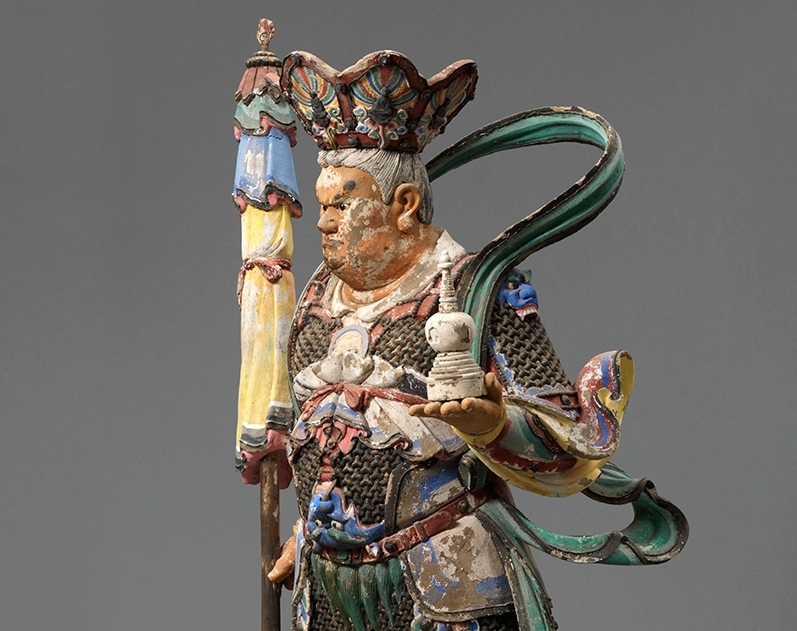
This Collection Highlight blog post, was written by Michelle Bennett, Head of Collections Management at the Rubin Museum of Art.
The work in our collection that I find most remarkable is the Virupaksha, aka the Guardian King of the West. Not only is it dynamic and brilliantly painted but it is one of the very few life-size sculptures in the collection. The figure has a fierce and engaging face with an intricately detailed costume. Behind the figure, a sash is raised and appears to be moving or blowing in the wind. This effect is not just lovely, but amazing—the fact that the sash intact is a surprise considering the material makeup of the sculpture.


When the Guardian King came into the collection in 2010, the figure rocked slightly on its wooden base and I was concerned about the stability of its structure, as well as the obvious fragility of the painted surface (see the photo above). I consulted with our conservators as to what steps we should take to preserve the figure. We determined that the first step should be to stabilize the painted surface through a process called consolidation. Through the surface examined we ascertained that the figure’s condition and survival were extraordinary considering it was made of unfired earth bulked with straw and then painted with polychrome.

The structure was more of a mystery, so we decided to send the Guardian King to a lab to be x-rayed. Through the x-ray, we found that the structure consisted of wooden posts nailed to the base and wrapped wire that was then overlaid with the unfired dirt and straw composition.


I find it fascinating that the figure is so well intact, and yet made of such fragile components. It also amazes me that the dynamic sash was never broken in the sculpture’s long journey to the Rubin. Determining that it would most likely be too much stress on the figure to reinforce the structure, we decided the best course of action would be to leave it as is, and to just move the Guardian King as little as possible. Virupaksha has found his “forever” home on our third floor of the Museum in our exhibition Masterworks of Himalayan Art, and a masterwork he surely is.
See the Guardian King for yourself in the Museum’s Masterworks exhibition on a daily Exhibition Highlights tour.
Add Your Thoughts
Comments are moderated, and will not appear on this site until the Rubin has approved them.

